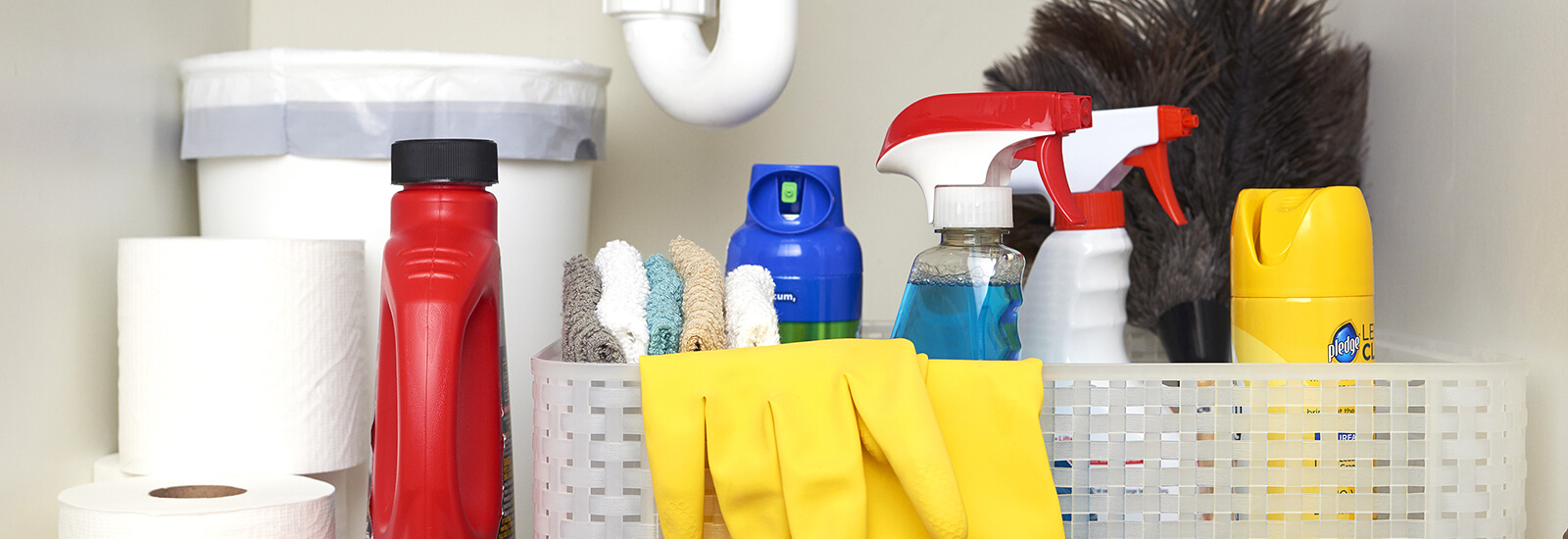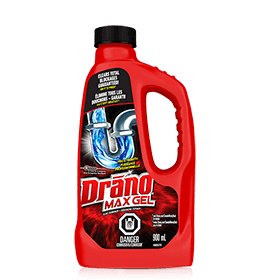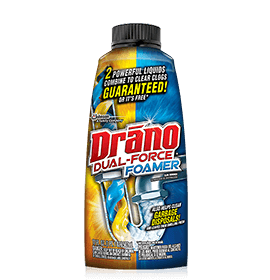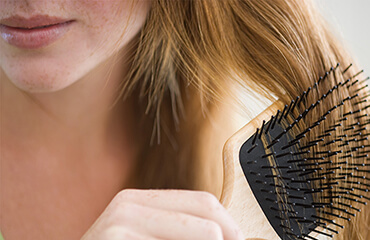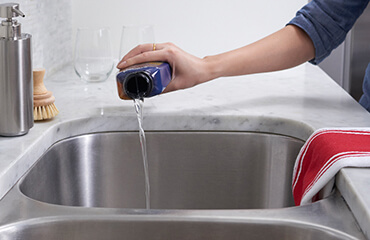
Frequently Asked Questions
2. What’s the difference between Drano® Clog Removers and Drano® Max Build-Up Remover?
Drano® Clog Removers can unclog a drain fast. They contain chemical ingredients that quickly dissolve hair, soap scum and gunk. You can use Drano® Clog Removers to unclog a kitchen sink, bathroom sink, shower or clogged bathtub, but DO NOT use them in toilets. For clogged or slow-running drains, apply the product and let it work 15 minutes, then flush with hot water. For tough problems, allow 30 minutes before flushing.
Drano® Max Build-Up Remover works over a longer time period to prevent clogged drains. Used regularly, it can help keep your drains flowing freely. It contains helpful microorganisms that release enzymes to break down residue. For preventive drain cleaning, you can use Drano® Max Build-Up Remover in drains, toilets and even septic systems. Apply Drano® Max Build-Up Remover overnight or before you go to work, then wait 6 to 8 hours before running warm (not hot) water down treated drains or flushing treated toilets.
3. Are Drano® products safe for plastic pipes?
4. Will Drano® products hurt my pipes?
NOPE. Drano® will not damage pipes or plumbing.
Drano® products are powerful enough to dissolve nasty clogs, but they will not harm your plastic or metal pipes, so there’s no need to worry. In fact, Drano® Max Gel Clog Remover contains a special ingredient that prevents pipe corrosion.
Be aware, however, there are other drain uncloggers on the market that could cause damage.
Avoid acidic chemical cleaners that contain sulfuric acid or hydrochloric acid, which can damage porcelain, metal and almost any other material when used incorrectly. Sulfuric acid is slightly less damaging to metal plumbing but can still damage aluminum, stainless steel and porcelain. These chemical cleaners should be used as a last resort—and only by a professional.
All Drano® products are safe and can be used with plastic pipes or metal pipes. Just follow the label directions so you can clear that clog safely.
5. Will Drano® products harm my septic system?
6. I have a slow-running toilet. What Drano® product can I use to get it running freely again?
The only form of Drano® product recommended for use in a slow toilet is Drano® Max Build-Up Remover. When used according to label directions, the microorganisms in this product will break down toilet paper and organic matter in pipes, which can slow water flow. (This product will NOT open a completely clogged toilet.)
Do not use any other Drano® product in toilets, as they do not contain microorganisms. Also, the trap configuration in toilets prevents these products from reaching areas where matter can accumulate and cause plumbing problems—so these products are ineffective in toilets.
Drano® Liquid Drain Cleaner, Drano® Dual-Force® Foamer Clog Remover, and Drano® Max Gel Clog Remover do not contain microorganisms. The trap configuration in toilets prevents these products from reaching areas where matter can accumulate and cause plumbing problems—so these products are ineffective in toilets.
7. Is Drano® sold in recycled plastic?
8. If Drano® Dual-Force Foamer Clog Remover gets on my sink or tub, will it harm the surface?
9. Are Drano® products safe for use in garbage disposals?
10. The Drano® Snake Plus tool does not fit down my drain—what do I do?
Drano® Snake Plus Tool + Gel System was designed to unclog a kitchen sink, bathroom sink, shower, bathtub and even a laundry drain. However, sometimes inserting the tool takes a couple of additional steps.
Often, drain grates and other clog-preventing mechanisms cover the opening of the drain, making it difficult to insert the tool. If you’re working on a clogged shower drain, a tub drain, a kitchen drain or a laundry drain, you may encounter a drain grate. Simply remove the grate using a screwdriver and then insert the Drano® Snake Plus Tool + Gel System tool.
If your drain has a stopper, try rotating the stopper, then remove it using an up-and-out pulling motion. Occasionally, the stopper will be attached to the pipe, in which case you’ll need to go under the sink and remove the screw or bolt from the vertical shaft. Then pull the rod out from the pipe and finally pull the stopper out of the sink.
If you’re having difficulty manoeuvring a drain with a shallow vertical pipe, such as a bathtub, you may have difficulty fully inserting the tool. Try angling the tool away from you while inserting and slowly work past the bend in the pipe.
